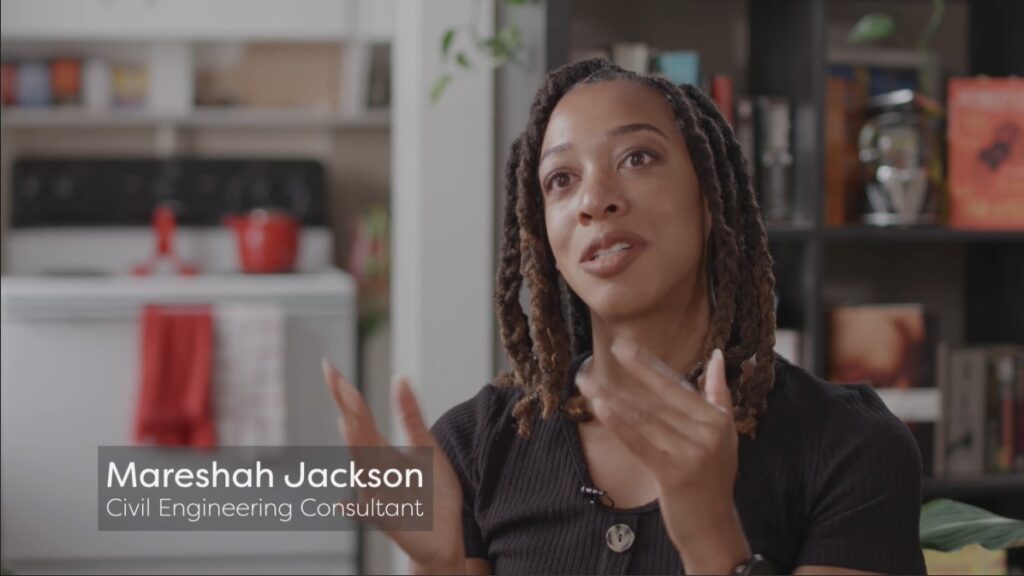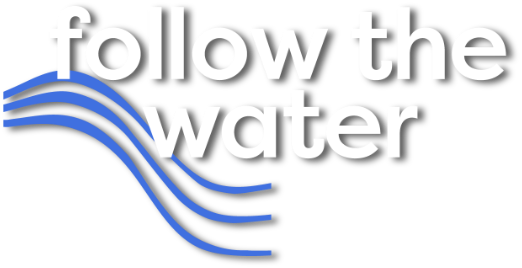Follow the Water Chapter 2: Disconnection
Author
Posted
Share


Do you know where your drinking water comes from? Do you know where your rainwater goes? We have an expectation that we can turn on the tap and we know that good clean water is there but we have lost our connection to our water.
In this video we explore
- How disconnection impacts our health
- How disconnection impacts the environment
Transcript
-Excuse me. Could I stop and ask you a couple of questions about water?
-Yeah, of course.
-Where does your drinking water come from?
-Do you mean like from the tap or from like around?
-My faucet sink, I guess.
-I’m going to leave the engineers to be responsible for that. It’s too complicated to understand.
-If the water, when it rains, goes down in one of those drains right there, do you know where that water goes?
-My answer would be no.
-As far as where that all happens, I’m not sure.
KATIE: We’re often disconnected from water because we don’t have to go get it. It used to be that we’d have to go find a clean source of water, see everything that’s interacting with it, make sure it’s a good place to drink from and go actually obtain that water. And now there’s an expectation we can just turn on the tap, and we know good, clean water is coming out of there. Yeah, it wasn’t until after graduate school that I even learned where the water goes when it rains, after it goes down into the catch basin and disappears. I didn’t realize that almost all of that water goes directly into the nearest stream or wetland. And sort of that realization that I hadn’t learned that, you know, that hadn’t been taught to me in school, hadn’t been taught to me by my parents, and when I asked my parents, they didn’t really know.
CAZ: I think in many ways, we’ve lost our sense of belonging because we’ve closed ourselves off from nature, so we don’t see it, or we understand it only as a cultivated piece of land.
MARESHAH: It feels like things were built against nature, but not like working with nature. There’s always been human influence, but there is a way to influence your environment without working against it.
KURT: I think as we live an urban life, you know, our connection, our direct connection, to water, to rainfall disappears.
SAM: So, Willamette Falls is a really fascinating waterfall. It’s right upstream of the confluence of the Clackamas and Willamette River. Europeans established this area. It was one of the first to be built up, so a lot of people that are locals don’t even know that it exists.
KURT: The electrical grid started here with transmission from this hydropower plant into Portland, but kind of disconnecting it from, you know, its early moments when it was a place of Native American culture and importance.
JUDY: That’s not sustainable. The things that got built on these rivers, the things that were done to these rivers in the time of a mountain, they’re the time of an ant. I can’t speak for how ancestors may have been pondering what is, who are these people who don’t seem to have a relationship with water? Water as waste or water as something to control. We’ve lost so much.
WENIX: You know, they were taking them and trying to make us be disconnected from our own culture, our own religion, because they had been disconnected before they even hit this country. “We’re going to kill the Indian and save the man.”
JUDY: And so, you have a culture that practices a colonizing methodology instead of looking at water as priceless or even looking at it as a relative— who puts a price on their mother?— you have, you have folks that came in and saw what there was, took it all in just a few generations, and weren’t thinking about how their great-great-great grandchildren were going to live here. So, turning waterways into, really, toilets, water became a way to carry away to the next, you know, downriver poisons and killing all the fish, killing all the other relatives, which we do have a relationship with and we have a responsibility to. It was kind of a head scratching like, don’t you need water to drink? Or how did that disconnect happen?
WENIX: So, now all those fixes that came 100, 150 years ago, we’re having to fix because they did not know this land. They didn’t want to listen to anybody else. And so, now we’re working as a whole country: How do we fix these things that we created? And so, the disconnection is because you come to a land to try to manage something you don’t know.
Everybody loves to go swimming and loves to go to water recreational. So, I think a lot of people still have connection in recreational. They just might not see it in that cultural way that we do. Or they know that it’s important, but they don’t always think about it that much because we forget to teach them, or they just haven’t been taught about it.
SAM: The more people that come down to the river and have a positive experience, the more people will be connected to the water that’s flowing past their community and the importance of it.
KATIE: A big part of what I do now in my job is trying to bring that knowledge to everyone and especially teach it at a really young age. There’s a cool mural project in downtown Gresham here, where we have schoolkids draw murals around the catch basins and the rain gardens to show this is where the water is going so that that connection is established really early on. So, as those children grow up, they always know that that’s where that goes and to make sure to keep that water clean. You know, the Indigenous peoples who lived on this land lived here at least for thousands of years, if not for time immemorial, and they knew how to live with the land. But understanding which of those principles can be used and how can we live in a way that is more in tune with the land and so that it can continue to provide for us?
JUDY: Indigenous communities have decided to share more because we are all in this together. The boundaries between our homelands and others aren’t… water doesn’t recognize those boundaries. It’s flowing, inviting folks to participate and recognize that this is their home too now and will have to be willing to live here in a good way and recognize what Indigenous people have been doing since time immemorial.
KATIE: You know, in a lot of places, the drinking water is from a river. And if we don’t know where that’s coming from, it’s harder to understand that, OK, if there are pesticides washing off of my lawn or chemicals coming out of my car that wash right into the river, those are coming back to me. I’m coming back and drinking those. So, understanding that that water is connected is really important for everyone’s health.
KURT: I think it’s important to know how we’ve been disconnected because it leads us towards a reconnection.

Related Posts
Sorry, we couldn't find any posts. Please try a different search.

